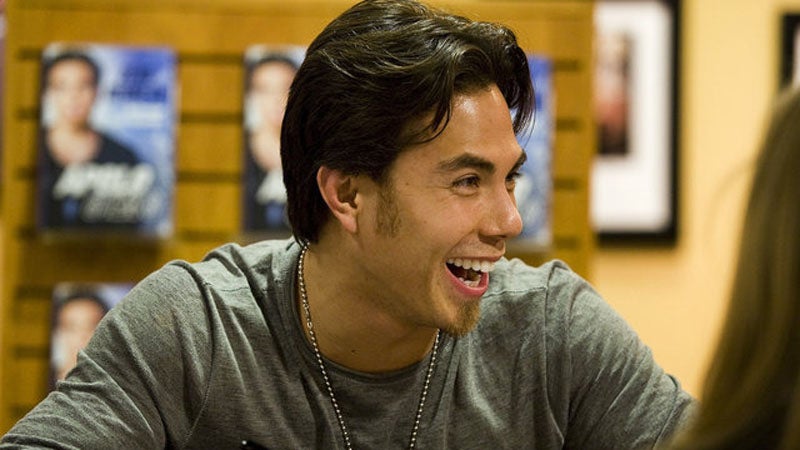rose to athletic fame in short track speed skating. Over the course of three winter Olympics, he won eight medals in events that topped out at just over two-minutes long. So when the approached him about competing in this year’s Ironman World Championship in Kona, Hawaii, “I really had to think about it,” Ohno says. “Ironman is not one of those challenges where you can take it lightly. It’s either you really, really do it, or you don’t do it at all.”
Apollo decided to really, really do it, following in the footsteps of legendary wide receiver Hines Ward. The Super Bowl MVP had never run more than a mile straight before he started Ironman training in 2013, but he in a respectable 13 hours 8 minutes and 15 seconds, jazzed to have successfully transitioned from NFL superstar to long-distance athlete. “I’m blessed, I’m honored and proud to say I’m amongst the endurance community,” Hines said.
Ohno has a slight advantage over Ward; he swam competitively until he was 12 years old, and ran the 2011 NYC Marathon in 3:25:14. That said, he still has a long way to Kona. “I’m about a month into my training,” Ohno says. “It’s still pretty new to me, the different energy systems and the type of training.”
Hines’ advice to Ohno: “Don’t worry about trying to beat my time, just enjoy the moment.”
Ohno’s advice to athletes looking to leap into the endurance world: see below.
1. Embrace the Pain
Even Olympians think endurance training is hard. “That constant grind every single day just wears on you,” Ohno says. “It just takes so much mental focus and time pushing toward this goal.” So make up your mind to give it your all. “It’s all about commitment level. If you decide to do something, really do it wholeheartedly. I don’t know exactly what my time will be, but I can promise you I’ll be my best when I show up on that day.”
2. Focus on Recovery
“Make sure you’re training hard,” Ohno says, “and also focusing on recovery, because that’s a huge part of it.” Ohno uses massage, ice baths, contrast baths, foam rolling, and, of course, chocolate milk, to help him recover from one workout and prepare for the next. “If I’m getting really, really sore, that’s usually an indication that I’m not getting the right type of nutrition post-workout.” He’s a proponent of chocolate milk’s 4:1 ratio of carbs to protein for optimal muscle recovery—and the science largely supports his choice, for men.
3. Race Yourself
“When Hines first signed on to do the Ironman, he was asking what the winning time was because he was going to try to win the entire thing,” Ohno says. “I think he realized very quickly that was not gonna happen. Ironman is really a test of your own will and a test against yourself. Many times you’ll have to ask yourself, ‘How much more do I have to give?’ It’s no easy task, there’s a lot of mental strength that comes into play. For me, I’ve already come to terms with the fact that I will not be in the top group, and I’m OK with that.”


